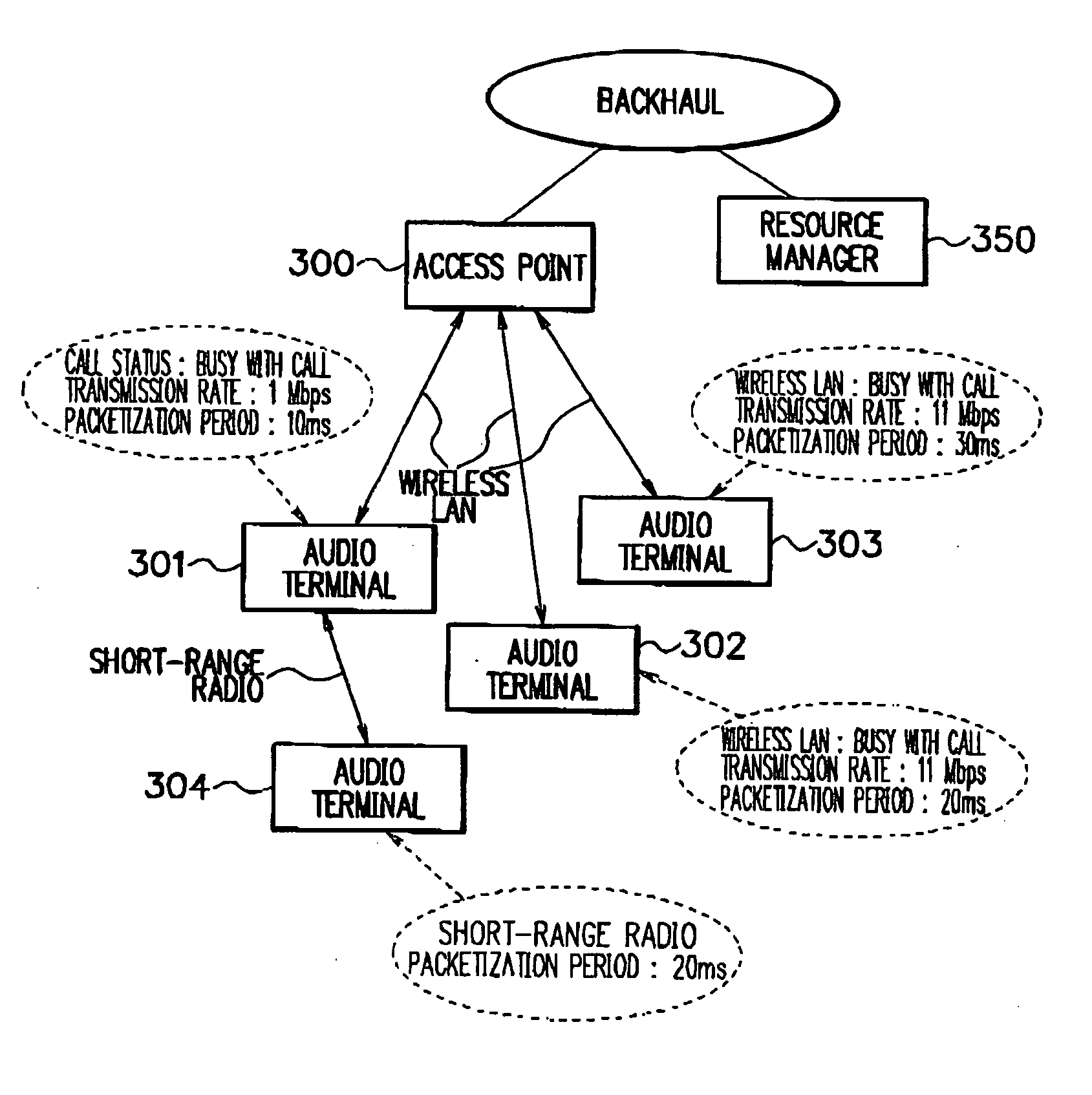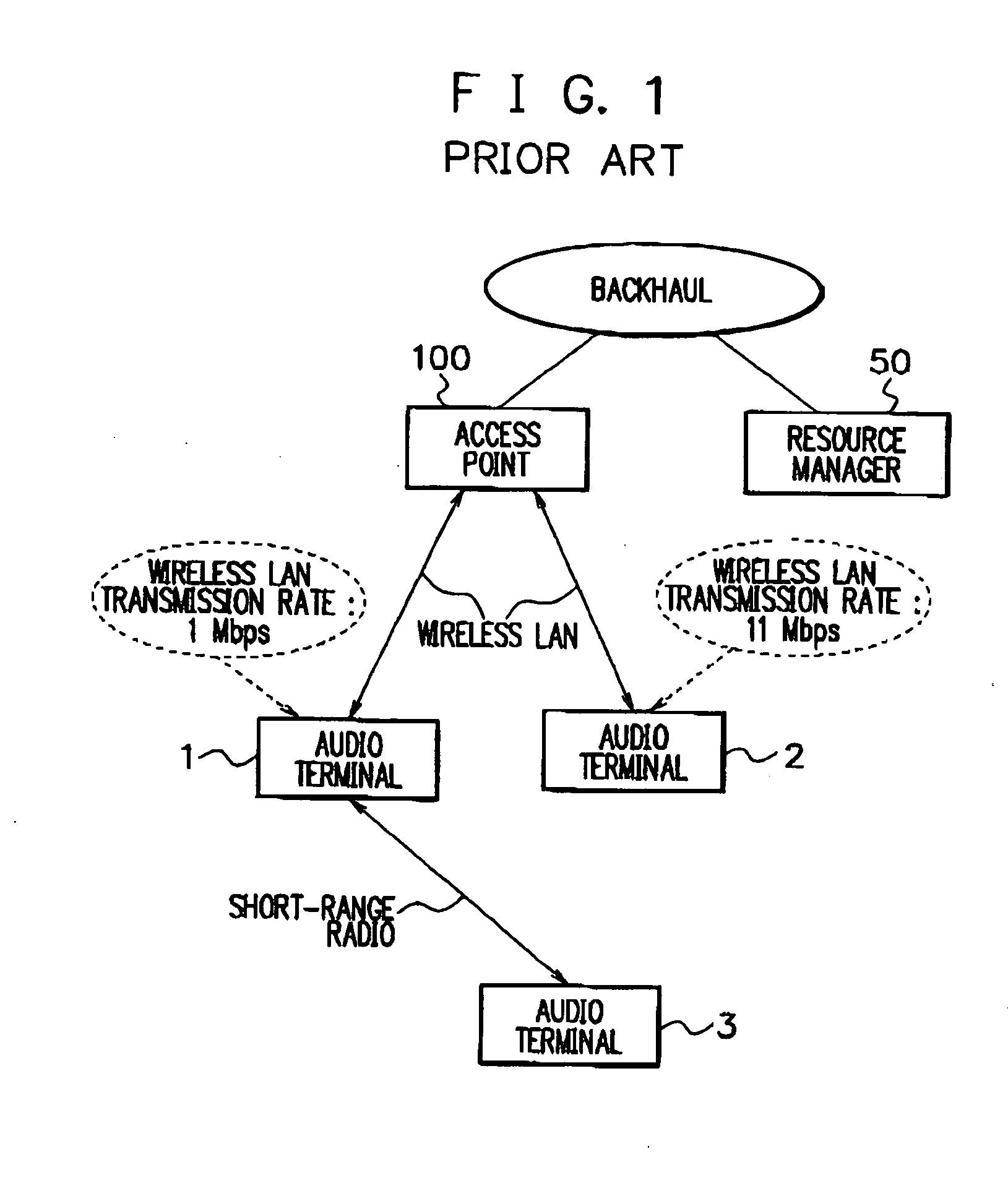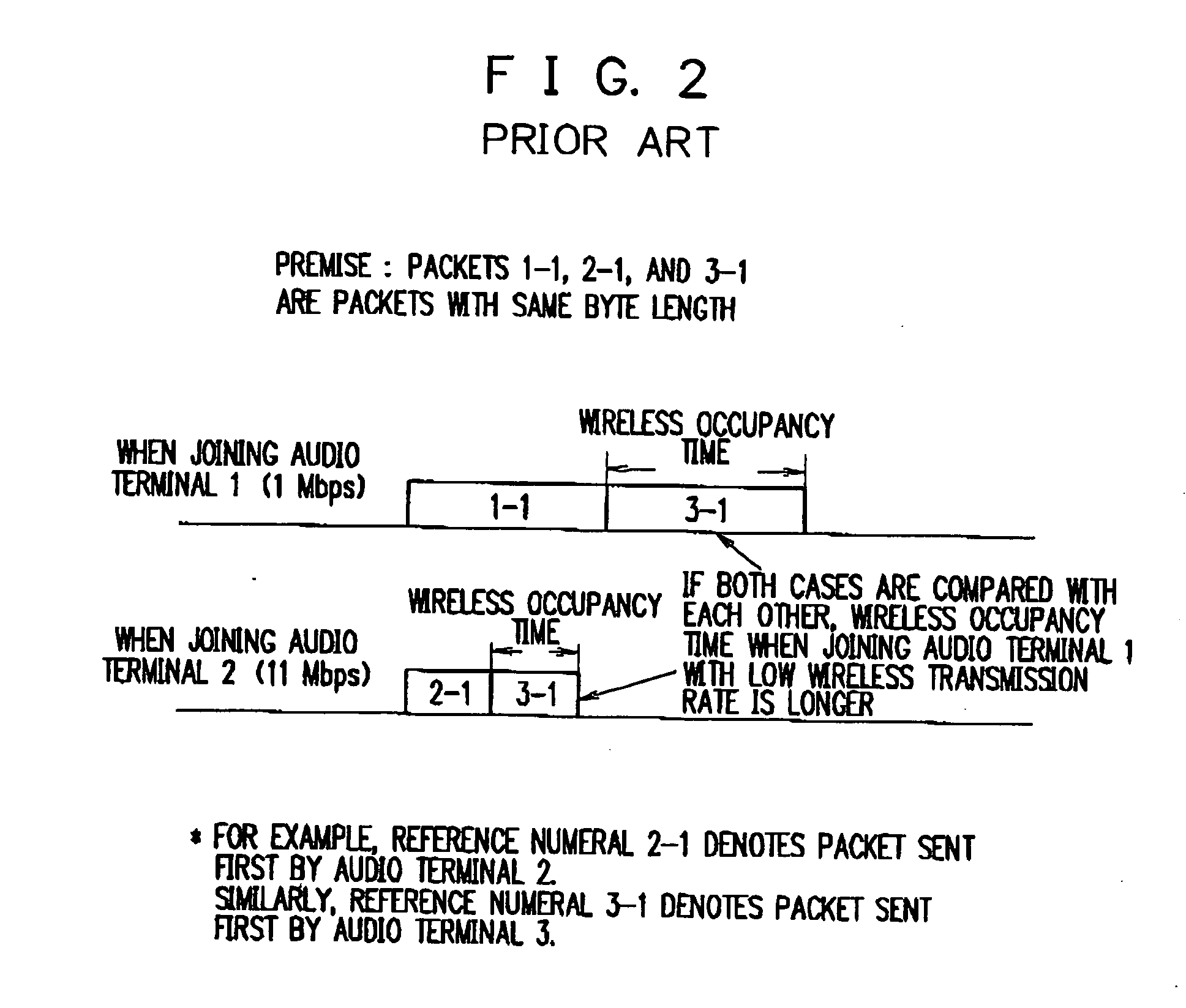Packet joining method, program, and apparatus
a technology of program and apparatus, applied in the field of packet joining methods, can solve the problems of call loss, low overall service to users, and poor audio quality of new calls but also those of existing calls, and achieve the effect of reducing audio delay and increasing the utilization efficiency of radio bandwidth
- Summary
- Abstract
- Description
- Claims
- Application Information
AI Technical Summary
Benefits of technology
Problems solved by technology
Method used
Image
Examples
first embodiment
[0079] An embodiment of the present invention will be explained using FIG. 6. A network comprises an access point 300, a resource manager 350, an audio terminal 301, an audio terminal 302, an audio terminal 303, and an audio terminal 304, similarly to the above-described embodiment.
[0080] Audio terminals which are performing audio communication while connecting to the access point 300 are the audio terminal 301, audio terminal 302, and audio terminal 303. Assume that the audio terminal 304 is denied audio communication over a wireless LAN by the resource manager 350, and a call from the audio terminal 304 is lost.
[0081] The audio terminal 304 performs Neighbor Discovery using short-range radio (A1 in FIG. 9). An audio terminal having been accessed through Neighbor Discovery (B1 in FIG. 10) sends in response information including the call status, wireless transmission rate, and packetization period of the audio terminal to the audio terminal 304 having performed Neighbor Discovery,...
second embodiment
[0094] In operation as described in the above embodiment, when a call ends, an audio terminal 302 permitting a packet from an audio terminal 304 to join asks an access point 300 to delete registered information of the addresses of the joining source and joining destination and at the same time asks a resource manager 350 to release a bandwidth. At this time, the resource manager 350 can permit the audio terminal 304 as the joining source to preferentially use the bandwidth. The audio terminal 304 as the joining source detects the end of the call in the audio terminal 302 or is permitted to use the bandwidth by a resource manager. With this operation, the audio terminal 304 can be configured to continue a call by communicating an access point 300 directly by regular packet communication through a wireless LAN or by packet joining through another Neighbor Discovery process.
[0095] According to this embodiment, even if the audio terminal 302 as the joining destination ends a call, the ...
third embodiment
[0096] An embodiment which performs a packet joining process of the present invention by a computer program will be explained next.
[0097]FIG. 20 is a diagram showing the configuration of an audio terminal of this embodiment. The audio terminal comprises a wireless interface (for wireless LANs) 601, a wireless interface (for short-range radio) 602, an operation unit 609, a display unit 610, an audio I / O unit 611, a storage unit 612, and a control unit (CPU) 600. A processing program for packet joining communication and the like of the present embodiment is stored in the storage unit 612. The processing program is read from the storage unit 612 by the control unit (CPU) 600 to control the operation of the control unit (CPU) 600.
[0098] In this embodiment, the procedure for packet joining communication starting from Neighbor Discovery can be started by a user's inputting the address, telephone number, or the like of a party through the operation unit 609 and display unit 610. After co...
PUM
 Login to View More
Login to View More Abstract
Description
Claims
Application Information
 Login to View More
Login to View More - R&D
- Intellectual Property
- Life Sciences
- Materials
- Tech Scout
- Unparalleled Data Quality
- Higher Quality Content
- 60% Fewer Hallucinations
Browse by: Latest US Patents, China's latest patents, Technical Efficacy Thesaurus, Application Domain, Technology Topic, Popular Technical Reports.
© 2025 PatSnap. All rights reserved.Legal|Privacy policy|Modern Slavery Act Transparency Statement|Sitemap|About US| Contact US: help@patsnap.com



